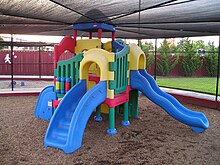Romance
From Wikipedia, the free encyclopedia
| Look up romance orromantic in Wiktionary, the free dictionary. |
Romance or romantic usually refers to romance (love), love emphasizing emotion over libido. It may also refer to:
Contents
- 1Genres
- 2Places
- 3Film and theater
- 4Literature
- 5Other uses
- 6Music
- 6.1Classical genres and compositions
- 6.2Groups
- 6.3Albums
- 6.4Songs
- 7
- Hellenistic romance, or Ancient Greek romance, a modern term for the genre of the five surviving Ancient Greek novels
- Chivalric Romance, a genre of medieval and Renaissance narrative fiction
- Romance (music), a type of ballad or lyrical song
- Romancero, the corpus of such Spanish ballads, or a collection of them
- Romance (meter), a metric pattern found in Spanish ballads
- Romanticism, or the Romantic period/era, an artistic and intellectual movement in the late eighteenth and early nineteenth centuries, including
- Romantic music, the musical style used by Beethoven, Chopin, Brahms, Wagner and other late 18th and 19th-century composers
- Romantic poetry, the poetic style used by Schiller, Blake, Keats, Wordsworth and other late 18th and 19th-century poets
- Romanticism in science, a movement in science during the Romantic period
- Romance novel, a genre of novel that focuses on romantic love
- Romance film, a genre of film of which the central plot focuses on the romantic relationships of the protagonists
- Romantic comedy film, a hybrid genre of film centered on a comic romantic relationship
- Shakespeare's late romances, the later plays of Shakespeare that mix tragic and comedic elements
Places[edit]
- Romance, Arkansas, U.S.
- Romance, Missouri, U.S.
- Romance, West Virginia U.S.
- Romance, Wisconsin U.S.
Film and theater[edit]
- Romance (1920 film), silent film, directed by Chester Withey
- Romance (1930 film), starring Greta Garbo
- Romance (1983 film), a Bollywood film produced and directed by Ramanand Sagar
- Romance (1986 film)
- Romance (1999 film), directed by Catherine Breillat
- Romance (2013 film)
- Romance (play), a play by David Mamet
- The Romantics (film), a 2010 romantic comedy film
- The Romantic (film), a 2009 animated film
Literature[edit]
- Romance (novel), a 1905 novel by Joseph Conrad
- "Romance" (poem), an 1829 poem by Edgar Allan Poe
- The Romantic, 2003 novel
Other uses[edit]
- Romance languages, a family of languages originating in south-western Europe ("Romantic" is not the adjectival form)
- Romance Standard Time, another name for Central European Time
- Romance studies
Music[edit]
Classical genres and compositions[edit]
- Romance (music) and list of compositions:
- "Romance" (guitar piece), also known as "Romance Anónimo", a Spanish instrumental guitar piece of anonymous origin
- Violin Romance No. 1 (Beethoven) in G major, Op. 40, by Ludwig van Beethoven
- Violin Romance No. 2 (Beethoven) in F major, Op. 50, by Ludwig van Beethoven
- Romantic Anton Bruckner's Symphony No. 4
- Romance in C major, Op. 48, for violin and orchestra Saint-Saëns
- Romance song by Debussy
- Romance, the second movement of the suite Lieutenant Kijé (Op. 60) by Sergei Prokofiev
- Russian romance, classical art song
- Scandinavian romanser, classical art songs, equivalent to the German Lied.
Groups[edit]
- The Romantics, an American rock 'n roll band from Detroit
Albums[edit]
- Romance, album by Montserrat Caballé
- Romance (Luis Miguel album), 1991
- Romance (Ali Project album), 2006
- Romance (Dave Palmer album), 2006
- Romance (David Cassidy album)
- Romance (Frank Sinatra album), 2004
- Romance (Tubelord album)
- Romantic (album), by The Human League
- Romances (Luis Miguel album), 1997
- Romances (Kaada/Patton album), 2004
Songs[edit]
- "Romance", a song from the musical The Desert Song
- "Romantic" (song), by Karyn White
- "Romance", a track on the album Light & Shade by Mike Oldfield
- "Romance", a pop waltz written by Gordon Lightfoot and released on his 1983 album Salute
- "Romance", a song by R.E.M. originally released on the soundtrack of the 1987 film Made in Heaven
See also[edit]
- Romance of the Three Kingdoms (disambiguation)
- Heroic romance genres
Note: the following entries are arranged in an etymological tree.
- Roma (disambiguation)
- Rome (disambiguation)
- Romaic
- Romanus (disambiguation)
- Aromanians
- Romagna
- Romain (disambiguation)
- Romaine (disambiguation)
- sition: initial; background-repeat: initial; background-size: initial; color: #0b0080; text-decoration: none;" title="Roman (disambiguation)">Roman (disambiguation)






